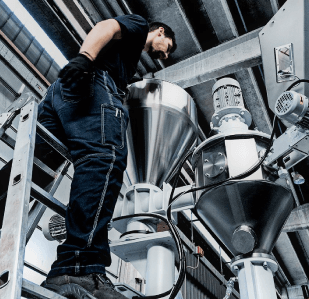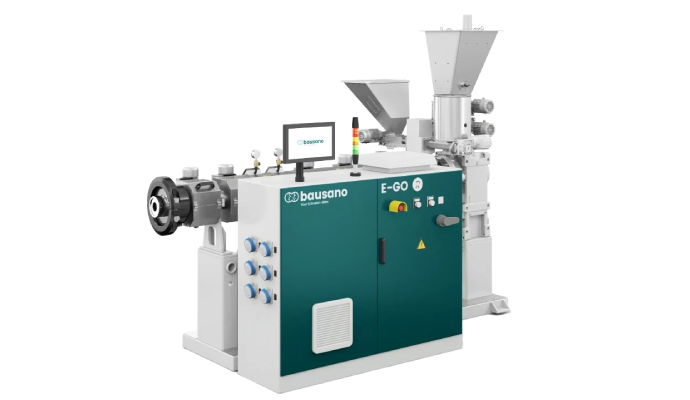In summary
Due to its great use in a wide range of applications,
plastic is one of
the main components of solid waste. Landfill space shortage and a general growing environmentally conscientious society give processors the opportunity to adopt new technologies for reducing waste and maximizing recycling efforts.
New Extrusion technology in Recycling
Waste from industrial plastics manufacturing is becoming more and more valuable in times of rising raw materials prices and increased environmental pollution. A lot of materials and plastics are subject to recycling, the most commonly used are PVC and Polyolefins. Urban and industrial waste collection always consists of a mixture of three main plastic components: low-density polyethylene (LDPE), high-density polyethylene (HDPE) and polypropylene (PP).
New extrusion technology and process design are key factors to ensure quality products and investment returns.
Polyvinyl Chloride (PVC) is one of the most used thermoplastic materials with respect to worldwide polymer consumption. Currently, PVC can be processed into a wide variety of products, such as medical devices, pipes, profiles, floors coverings and roofing sheets, through various processes and technologies.
In mechanical recycling, the materials are ground, remelted and reprocessed. The high pressure, temperature and stresses undergone during these steps lead to changes in the polymer structure and properties. This can lead to degradation, crystallization and consequent processability problems, which result from molecular chain scission, branching and crosslinking, or decrease tensile strength and impact strength.
Also, PVC material is subject to degradation. During mechanical recycling, PVC presents a highly sensitive environment, involving continuous changes in its morphological structures and properties during processing. Because of shear stress, the fusion of plastic particles progressively changes the original particle, affecting both physical and mechanical properties of the material; this instability can make it lose quality.
In general, reprocessing HDPE and LDPE makes the materials harder to process due to the decrease of Melt Flow Index (MFI), which significantly increases melt pressure, extrusion torque and complex viscosity.
The challenge with PO recycling is that the melt viscosity of the materials increases considerably, so the production process needs more energy. Higher viscosity could make recycled PO products difficult to extrude, but alloying some materials together, virgin and recycled, can minimize the changes in MFI.
Melt blending
The best solution is melt blending and it is one of the most widely used ways of mechanically recycling plastic waste. It consists of blended recycled plastics with similar types of virgin plastics or different types of recycled plastics in the melting process. Blending recycled plastics with virgin plastics can reduce costs, but also the new blended plastics can maintain the same performance as virgin plastic products. The melt blending technique is the most adapted for post-industrial scrap thanks to the clear separation of different types of plastics, and a lower level of impurities in it.
Also, for PVC, the melt blending technique is the solution to the degradation problem, even if it depends on the type of PVC and its former use. Unlike PO, which is similar and mixed, PVC doesn’t have a family of plastics to be mixed with, so several tests were done, like mixing it with PMMA or ABS to improve its quality and mechanical properties.
Additives and fillers
It isn’t sufficient only to mix recycled and virgin plastics. PO or PVC scraps also need filler reinforcements, which can be natural fillers, like wood, or there are also inorganic fillers, and they can improve morphological, mechanical, rheological and thermal properties.
Every project needs its own custom extruder and mix of fillers, additives, virgin and recycled plastic.
Feeding system
Before the waste plastic can be processed, it must first be broken down, cleaned and then divided according to type if it is post-consumer waste. So, the plastic waste must be re-grinded and then it can be transferred via conveying lines and feeders to the compounding process. Any plastic material to be recycled can be heterogeneous in shape, dimension and bulk density.
Downstream
One of the challenges of recycling waste material is the residual moisture. Therefore, a reprocessing extruder line needs degassing and venting, which are carried out during various extrusion processes to remove not only moisture but also monomers, oligomers, solvents or decomposed materials.
After the degassing phase, there is a vacuum pump and a melt pump, then the material will pass through a screen changer. This is fundamental to remove any contamination of plastic that a manufacturer can encounter with waste before the pelletizing phase.






.jpeg)
.jpeg)